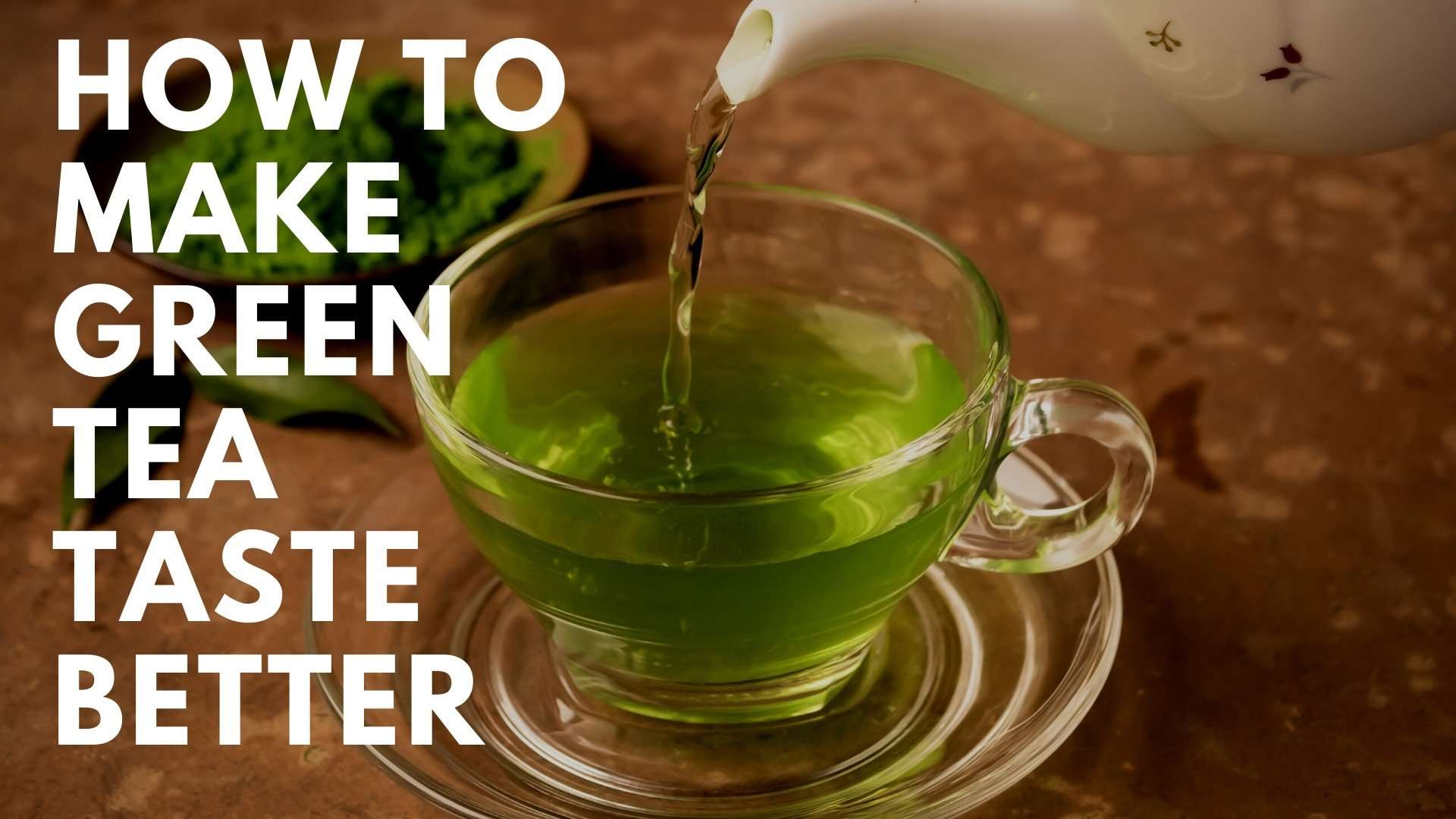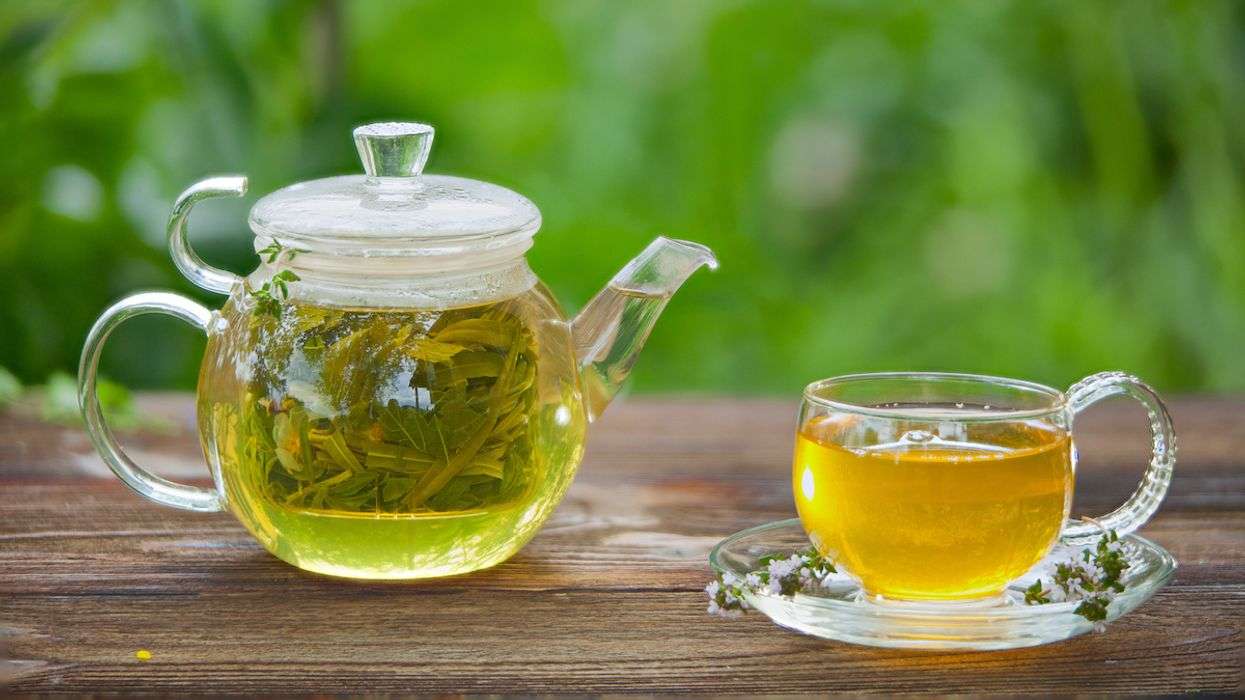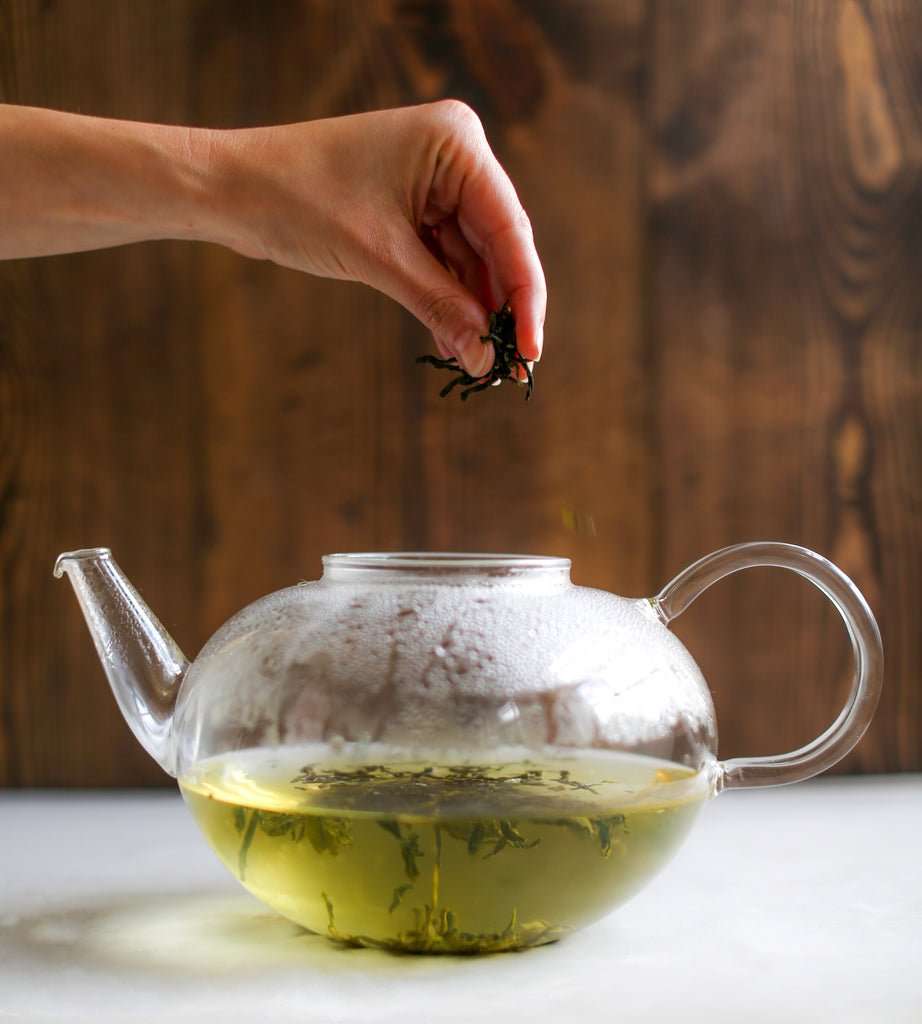A Brief History Of Matcha And Meditation
Matcha has numerous well-studied health benefits, though the specific history of matcha and meditation is a long one.
Green tea ceremonies have roots that date back centuries into Chinese Buddhism. Still, it wasn’t until Japan that matcha tea truly developed in harmony with the practice of Zen Buddhism and meditation.
Japanese zen monks first discovered matcha’s value to mindfulness when they drank the vibrant green tea before long hours of meditation practice. The monks found that drinking matcha enhanced their ability to meditate and focus for hours on end.
Drinking matcha enhanced their focus and kept them awake during long meditation sessions. It wasn’t long before the common Japanese people began regularly drinking matcha green tea in traditional tea ceremonies.
Why Trust The Spruce Eats
Lindsay Boyers is a certified holistic nutritionist with extensive food and drink-testing experience. Shes developed over 1,000 original recipes and is constantly on a mission to find the best options across all food and beverage categories.
This piece was updated by Derek Rose, the coffee and tea expert for The Spruce Eats. He researches a variety of products, from tiny tea infusers to high-end kettles, and interviews field experts for their insight. He is especially a fan of matcha, enjoying it in everything from lattes and smoothies to the traditional form.
Shunan Teng is the founder and CEO of Tea Drunk and an avid tea educator. Tea Drunk was founded in 2013 and has a brick-and-mortar tea house in New York City. Its teaware and Chinese teas can be purchased online.
Steeping Brewing And Serving
Steeping, or brewing, is the process of making tea from leaves and hot water, generally using 2 grams of tea per 100 millilitres of water or about 1 teaspoon of green tea per 150 ml cup. Steeping temperatures range from 61 °C to 87 °C and steeping times from 30 seconds to three minutes.
Generally, lower-quality green teas are steeped hotter and longer while higher-quality teas are steeped cooler and shorter, but usually multiple times . Higher-quality teas like gyokuro use more tea leaves and are steeped multiple times for short durations. Steeping too hot or too long results in the release of excessive amounts of tannins, leading to a bitter, astringent brew, regardless of initial quality. The brew’s taste is also affected by the steeping technique two important techniques are to warm the steeping container beforehand to prevent the tea from immediately cooling down, and to leave the tea leaves in the pot and gradually add more hot water during consumption.
Read Also: Dunkin Donuts Menu Boba
How To Drink Green Tea
Unlike black tea, green tea does not need cream, sugar, and other additives, which may even reduce its health benefits. A squeeze of lemon juice is a nice boost of flavor for some types of green tea.
Most green tea is brewed with simmering water between 150 F and 180 F. The brewing times vary by the type, though they’re generally short. Steamed Japanese green teas require just 30 seconds, and others may go as long as four minutes. Brewing green tea too long will make it bitter. Always follow the recommendation for time and temperature provided with the specific tea you’re brewing.
Which Is Better Black Tea Or Green Tea

The bottom line. Green and black tea provide similar health benefits, including for your heart and brain. While green tea may contain more powerful antioxidants, the evidence does not strongly favor one tea over the other. Both contain the stimulant caffeine and L-theanine, which has a calming effect.
Don’t Miss: How To Order Boba At Starbucks
Are Green Tea Lattes Good
Are Green Tea Lattes Healthy? Green tea is a very healthy drink and its easy to make a healthy green tea latte! The thing you need to watch out for are green tea lattes that are made with a pre-made green tea mix. This one is 6 simple ingredients and you still get all the amazing health benefits of green tea!
Green Tea Health Benefits
Tea buds and leaves contain antioxidant compounds called flavonoids. Because of how it is processed, green tea undergoes less internal change which means it contains the largest quantity of intact catechins. Green tea catechins a substance that protects our cells from damage by free radicals consist of four antioxidant compounds, which is why green tea has long been believed to have many health benefits.
In fact, antioxidant levels in green tea have been reported to be 100 times more effective than vitamin C and 24 times better than vitamin E in protecting our immune systems. While research is ongoing and there is still speculation as to what role tea, and green tea in particular, plays in disease prevention, a cuppa two or day certainly wont cause any harm!
Read Also: Dunkin Donuts Boba 2021
Caffeine Content In Green Tea
Green tea is generally known to have lower caffeine content per cup than black tea and much lower caffeine content than coffee. Like all drinks cultivated from caffeinated plants, however, a specific level of caffeine per cup of green tea is hard to define as it will depend on the type of green tea as well as how is was processed and prepared.
| 8 oz. Beverage |
| 95 to 200 mg |
According to a Journal of Food Science test of caffeine levels across commercial brands of green tea, the caffeine content in each 8 oz. cup varied by brand from 11 mg to 47 mg, and other sources record green teas that can contain upwards of 60 mg per brewed cup.
If youre looking for low caffeine content in your green tea, be sure and read the packaging carefully or ask your tea supplier directly for the caffeine information specific to the tea you are buying.
It Is High In Antioxidant Polyphenols
Green tea has more health benefits than black tea, which can be attributed to its lack of processing. Green tea is higher in protective polyphenols. The major polyphenols in green tea are flavonoids, the most active of which are catechins and epigallocatechin gallate , which function as powerful antioxidants.
Antioxidants are known to protect the body against disease and are an important part of a healthy diet. Antioxidants can be found in a range of fruits, vegetables and other unprocessed foods. As part of a balanced diet, green tea can be a good source of antioxidants.
You May Like: Best Iced Green Tea For Weight Loss
What Material Are Tea Bags Made From
The most common material from which tea bags are made is filter paper. Filter paper is usually made of abaca, the leaf stalk of a banana plant from the Philippines.
Most mass-produced tea bags are made in an assembly line. Two large rolls of filter paper are fed through a machine that releases dried tea leaves between them. A conveyor belt then brings the paper and tea into a drum, which seals them shut with an indentation pattern. The bags are then cut into perfect squares, and a string and tag are stapled to each bag. Some companies use other materials for tea bags, such as silk or gauze, but they are less common.
What Type Of Matcha Is Best
Results: Culinary Grade First place: Aprika Life Premium Culinary Grade Matcha. Second place: Leopard Fine Culinary Grade Matcha. Third place: Mizuba Culinary Grade Matcha. Fourth place: KENKO Culinary Grade Matcha. Fifth place: Jade Leaf Culinary Grade Matcha. Sixth place: Matcha Moon Culinary Grade Matcha.
Also Check: Does Starbucks Have Boba Tea 2021
How Much Caffeine Does Green Tea Contain
Green tea does contain caffeine, although varieties and brands may differ. An equal quantity of green tea contains less caffeine than coffee , but it can still act as a stimulant. As a result, some people find that drinking green tea increases energy levels, concentration and mood, but this effect may vary between individuals.
If you are sensitive to caffeine, it is advisable to limit the total number of cups of green tea you drink in a day. Too much caffeine can disrupt sleep patterns. If this affects you, try cutting back on caffeinated drinks after lunchtime.
Looking for more information on how much caffeine is in tea? Our in-depth guide compares different types of tea and discusses which factors affect the caffeine content.
What Is Green Tea Good For

People used green tea in traditional Chinese and Indian medicine to control bleeding and heal wounds, aid digestion, improve heart and mental health, and regulate body temperature. Studies suggest that green tea may have positive effects on weight loss, liver disorders, type 2 diabetes, Alzheimers disease, and more.
Read Also: Green Tea Latte Art
Where Does Green Tea Come From
As with all teas, there are three steps to the production of green tea: growing the plant, harvesting the leaf, and processing the harvest into a finished tea. The tea maker has to exercise precision, patience, and flexibility to make things just right.
Theres an adage in tea that quality is made in the field and lost in the processing. This is especially true with greens. Camellia sinensis, the plant from which all tea is made , has two primary varieties: the China Jat indigenous to China, and the Assam Jat, native to Indias Assam region. Green tea is typically, though not always, made with the China Jat whose smaller leaves yield more nuanced flavors than the larger, bolder leaves of the Assam Jat. Underneath the broad umbrella of the China Jat, there are countless cultivars that have been honed over millennia to yield specific flavors unique to the soils and weather conditions from which they hail.
Minimal Processing Leaves Nutrients Intact
Unlike soda, another common source of caffeine, tea is relatively unprocessed. After picking the leaves, they are allowed to soften before being rolled to wring out their juices . After heat is applied to the leaves, they are dried and ready to use. This minimal amount of processing means that green tea retains many of the phytonutrients that are available in the actual tea plant.
Recommended Reading: Menoslim Tea Side Effects
I Tried A Couple Of Green Tea Cups For Comparison
I like my tea fairly strong, about an 8 on a 1 to 10 scale. This means I usually use about 2 teaspoons of green tea to 250 ml/8.5 oz of already boiled water. That’s how much I used here in this mug, in the tea ball. Steeped at 80 C for 3 minutes.
My particular tea is from Demmers Teehaus , and it’s a green tea with cornflower and sunflower petals. I doubt those contributed to the color of my tea, but here it is, fairly yellowish. It was actually light green in the first 30 seconds since introducing the tea ball and moving it around a bit.
I know this tea blend very well, I’ve repurchased it for years, and I’ve tried it in weaker concentrations. The color is the same as this final one, and the tea house I got it from is a fairly good one. All I can say is that the leaves in this tea are most probably not steamed, and possibly not the freshest batch when I bought it.
I’m not unhappy with the taste, but as far as green goes, this is not a green looking tea. However we need to remember that not all green teas are the same. Still, just to rule out the influence of the corn flower and sunflower petals, I’ve also tried with a simple green tea.
This is from a Japanese restaurant I went to on the same day. I trust them to have at least a decent green tea assortment. As it turns out, their tea came out yellowish as well. It wasn’t Gyokuro tea either, but a blend of green tea that they’ve named themselves.
To Keep Caffeine Levels Low Consider The Following:
- Brew your tea properly with the correct amount of water, temperature and brew time.
- Use loose leaf tea. Teabags tend to contain smaller, cut leaves resulting in a faster caffeine extraction.
- Try a green tea blend, which tends to contain ingredients that are naturally caffeine free, or go for a decaf option like our .
Read Also: How Much Caffeine Does Snapple Have
Green Tea Might Help Fight Off Cancer
Your cells naturally accumulate oxidative damage during regular cell metabolism. A class of molecules called antioxidants can prevent or even reverse that damage. One of the most powerful antioxidants is called epigallocatechin gallate, and it is found in high levels in green tea. Epigallocatechin gallate has been shown to reduce the growth of breast and prostate tumors .
Cultivation Of Tea Plants
The first stage of tea production is the cultivation of the tea plant. The Camellia sinensis plant is an evergreen bush that thrives in tropical and subtropical climates. This plant prefers acidic soil and a significant amount of rainfall for the best growing conditions. Grown as far north as England and as far south as New Zealand, the tea plant is cultivated all across the world. Tea plants grown at higher altitudes tend to have a more potent flavor.
In general, it takes about three years before a tea plant produces leaves suitable for tea making. Tea plants are categorized into three different groups based on their size . Assam leaves are the largest, followed by Cambodian, which are medium sized and China type leaves, which are the smallest. While the tea plant can grow up to 50 feet tall, most plants for tea harvesting are kept to waist height in order to make it easier to pluck the young, fresh leaves at the top of the plant. Shorter plants also tend to produce more shoots and leaves, thus increasing production capacity.
Also Check: Most Expensive Earl Grey Tea
Potential For Liver Toxicity
Excessive consumption of green tea extract has been associated with hepatotoxicity and liver failure. In 2018, a scientific panel for the European Food Safety Authority reviewed the safety of green tea consumption over a low-moderate range of daily EGCG intake from 90 to 300 mg per day, and with exposure from high green tea consumption estimated to supply up to 866 mg EGCG per day. Dietary supplements containing EGCG may supply up to 1000 mg EGCG and other catechins per day. The panel concluded that EGCG and other catechins from green tea in low-moderate daily amounts are generally regarded as safe, but in some cases of excessive consumption of green tea or use of high-EGCG supplements, liver toxicity may occur.
Reduces Redness And Irritation

Green tea also has anti-inflammatory properties . This is due to the teas high content of polyphenols.
Green teas anti-inflammatory properties can help reduce skin irritation, skin redness, and swelling. Applying green tea to your skin can soothe minor cuts and sunburn, too.
Due to its anti-inflammatory properties, have also found topical green tea to be an effective remedy for many dermatological conditions. It can soothe irritation and itching caused by psoriasis, dermatitis, and rosacea, and it may also be helpful for treating keloids.
Don’t Miss: What Tea Is Good For Uti
Is It Ok To Drink Tea Everyday
Though moderate intake is healthy for most people, drinking too much could lead to negative side effects, such as anxiety, headaches, digestive issues, and disrupted sleep patterns. Most people can drink 34 cups of tea daily without adverse effects, but some may experience side effects at lower doses.
Advice To Avoid When Consuming Green Tea
It may seem weird, but some people drink Green Tea in temperatures over 90 degrees Celsius. Make sure you drink Green Tea warmed in lower temperatures so that you keep all nutrients active, and you dont face the danger of internal burns in your mouth and esophagus that may lead to cancer creation over time.
Furthermore, it could be a good idea to prepare your Tea using pure fountain water and not tap water. Fountain water has fewer salts inside and helps catechins and polyphenols to stay active for a more significant time in your hot cup of Tea.
Finally, some of the drugs and substances you should avoid taking with Green Tea are:
- Alcohol
- Stimulant drugs
- Herbal supplements that affect blood clotting
Also Check: Twisted Tea Half And Half Carbs
How Is Green Tea Made
Unlike black tea or oolong tea, green tea is a non-fermented type of tea, indicating that it has undergone no oxidation. The traditional method of processing these teas involves light withering followed by heating , rolling, and drying.
Fixing
Once the leaves are plucked, they are immediately taken to the factory to be fixed or de-enzymed . This prevents the leaves from oxidizing and turning brown. Fixing can be carried out in pans or woks set over wood stoves or steam tunnels. Depending on the choice of fixing method and extraction conditions, a tea will develop particular kinds of flavor. For example, slowly pan-fixed green tea tastes sweeter than high-fired tea.
Rolling
Once fixed, leaves are rolled and given their final shape. The process of rolling helps break down the cell walls and extract aromatic compounds that are concentrated across the many layers within a leaf.
Drying
Next comes drying which is carried out in industrial dryers or pans. Drying is carried out until the moisture content is reduced to about 1% of the total weight of the leaves.
How many types of green tea are there?
Further, green teas are not graded like black teas instead tea producers have a grading system based on the style and the size of the finished leaf. Broadly, theres the folded leaf green tea such as the Chinese Longjing and Japanese sencha green tea, and the twisted leaf, such as the Chun Mee or Nepals Ilam greens.